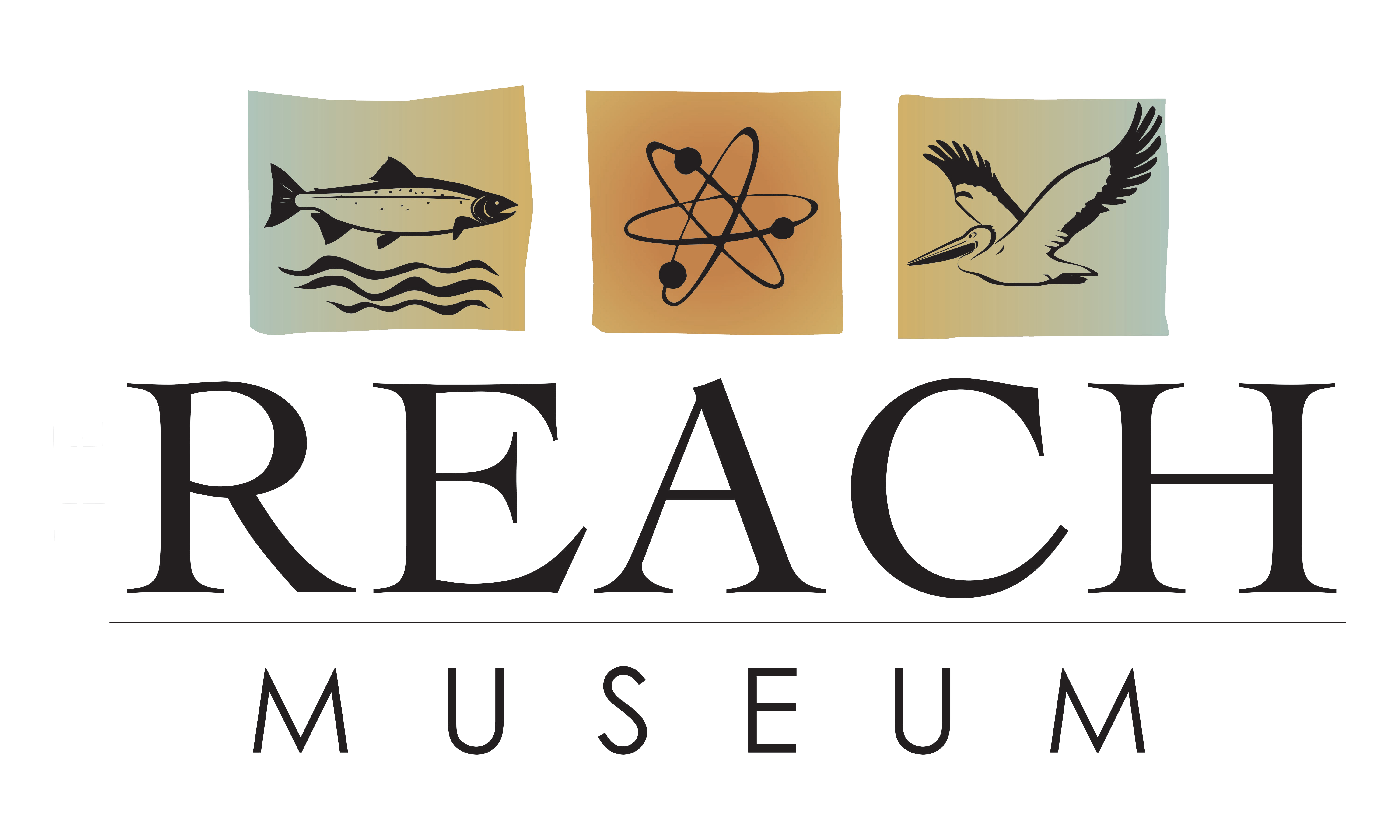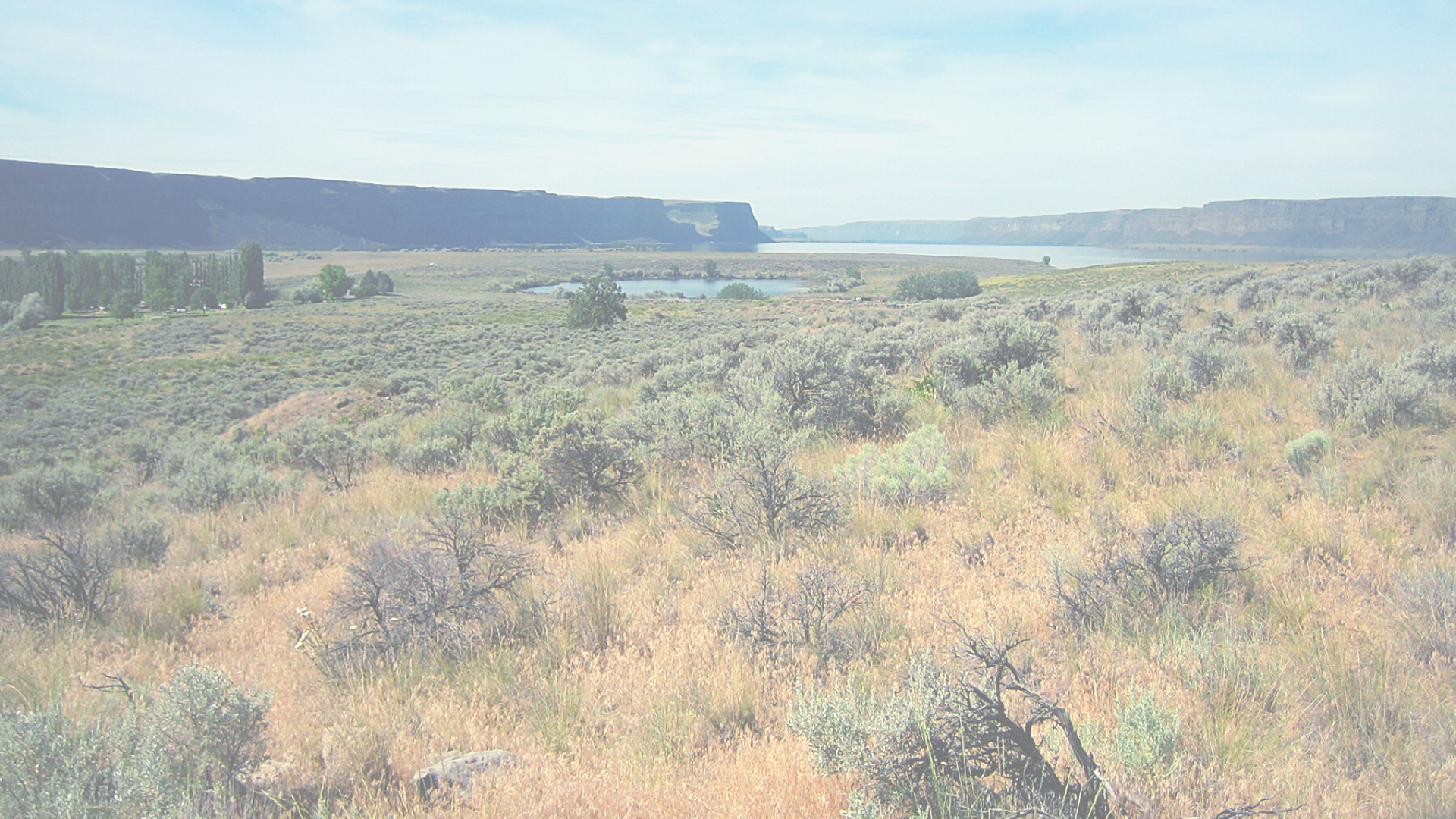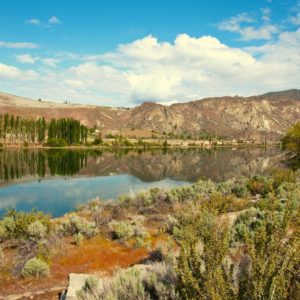The Hanford Reach of the Columbia River is home to a diverse array of plant and animal species and the Hanford Reach National Monument is managed by the U.S. Fish and Wildlife Service.. The three hundred square miles of the monument surround the Hanford Site, where plutonium was produced for nuclear weapons during World War II and the Cold War. Some of Hanford’s structures and buildings remain, and waste clean-up will continue long into the future, but much of the preserved land is undeveloped. It provides a window to the past, a view of the land and its living things as they were before modern agriculture and urban development.
The massive river brings freshwater to the arid shrub-steppe landscape, and where water and desert meet, you may see a concentration of wildlife. The sight of a deer or coyote along the riverbank is memorable, but remember it’s an indication of a larger web of energy that supports that animal. For every creature seen, there are numerous connections unseen…until you take a closer look. Grazing animals are fed by the grasses and evergreen sagebrush, which are fueled by abundant sunshine. Predators and scavengers feast on spawned-out salmon, which bring nutrients from the ocean far inland. Without many trees, the birds find places to nest among the shrubs, on the ground, and even in the burrows left by other animals.
The REACH Museum’s Gallery “The Living Land” provides a glimpse into the web of life in every season, but these activity sheets can also help you learn the names of the Hanford Reach’s plants and animals and their connections to each other. If you print them out, you won’t want to make them double-sided, because there are some things to cut out.
The shrub-steppe ecosystem, also called sagebrush-steppe, stretches from eastern Washington into Oregon, Idaho, Wyoming, and northern Nevada.



